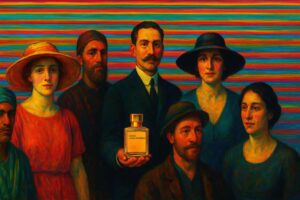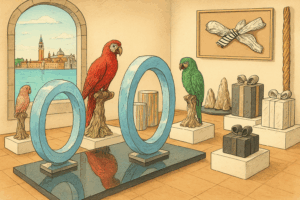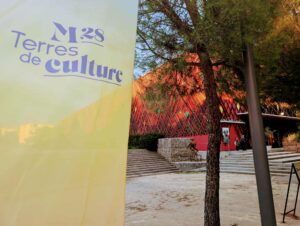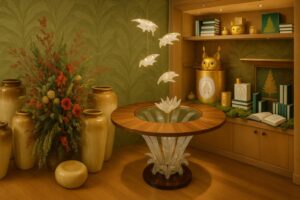The Musée des Beaux-Arts of Dijon gets a new lifting and proposes more spaces of exhibition.. and its restaurant!
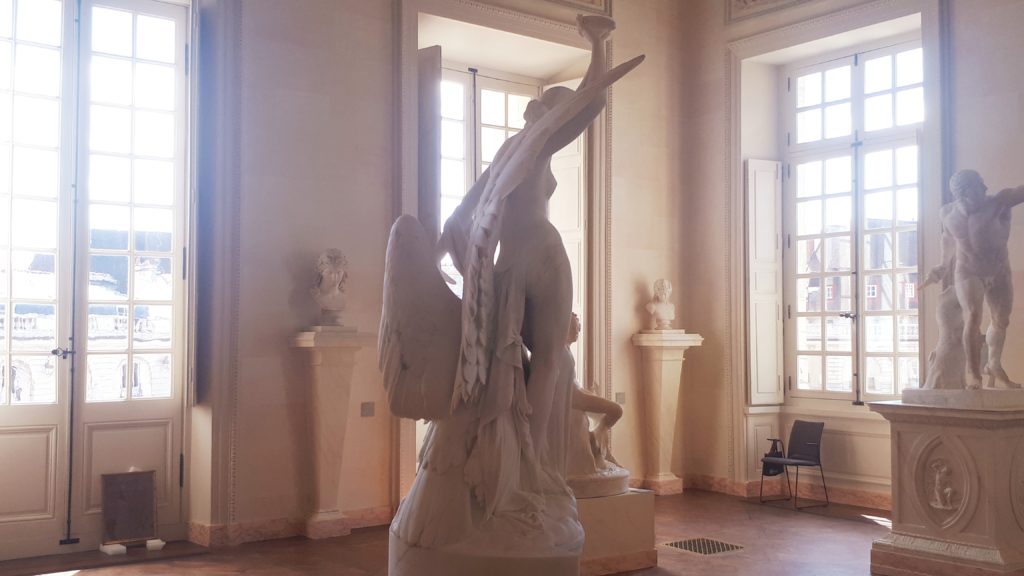
The first French Museum of Fine Arts, located in Dijon, got a new facelift after a few years of renovations works. An occasion to highlight its huge collection of Art of 130,000 works, from all periods. The exhibition surfaces has just passed through an expansion of 4000m2 to 6500m2. 6 centuries of architecture rub shoulders in this museum, the collections are thus adapted to these different periods. A real Historical Monument approach, especially since the monument was in poor condition in the early 2000s.
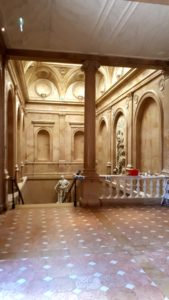
 In this new version the Musée des Beaux-Arts de Dijon has opened all of its new extended spaces, metamorphosed to the public, from last Friday, May 17th 2019, with a majestic entrance straight from the Place de la Sainte-Chapelle, which becomes a new pedestrian square of the Dijon City, main city of the Bourgogne Franche-Comté region.
In this new version the Musée des Beaux-Arts de Dijon has opened all of its new extended spaces, metamorphosed to the public, from last Friday, May 17th 2019, with a majestic entrance straight from the Place de la Sainte-Chapelle, which becomes a new pedestrian square of the Dijon City, main city of the Bourgogne Franche-Comté region.
From this new birth, we have to consider that the museum already experienced two centuries of its prestige and its influence. The surfaces were redesigned and now more accessible to visitors, more than 50% increase after renovation, allowing to present more than 1,500 works. The itinerary of the permanent exhibition has been entirely renovated to facilitate the scientific discourse around the works: a chronological journey, with, as a guiding principle, collections exhibited in buildings built at the same time as the works which, in their quasi totality, have been partially or completely restored. With a special mention to the Egyptian antique section that makes a special impression already since the start of the visit. Admire the picture of the view of the XIXth Century hall staircases (photo credits: Alex Plato).
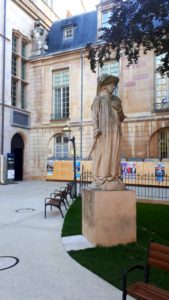
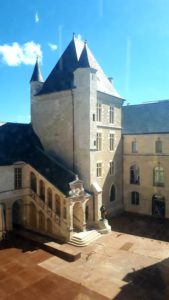
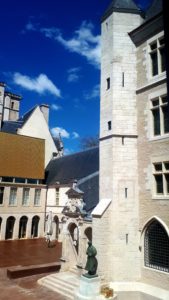 A museum open to the streets of Dijon. accessible from the rue de la Liberté, the square of the dukes or the place of Liberation revisited by Jean-Michel Wilmotte, the museum is now open to the city. The visitor is also invited to rediscover the Brasserie des Beaux-Arts, a real cultural and gastronomic agora, via a new public square, the Sainte-Chapelle square, which marks the main entrance of a museum whose windows offer some unprecedented perspectives on the roofs of the cathedral. Housed in a historic palace which is one of the 50 most emblematic monuments in France, it is one of the only Art museums in France to obtain the maximum score of 3 stars by the Michelin Travel Green Guide. Another innovation would be the Material Library, a possibility for people (like blind ones) to touch some artworks or their composites.
A museum open to the streets of Dijon. accessible from the rue de la Liberté, the square of the dukes or the place of Liberation revisited by Jean-Michel Wilmotte, the museum is now open to the city. The visitor is also invited to rediscover the Brasserie des Beaux-Arts, a real cultural and gastronomic agora, via a new public square, the Sainte-Chapelle square, which marks the main entrance of a museum whose windows offer some unprecedented perspectives on the roofs of the cathedral. Housed in a historic palace which is one of the 50 most emblematic monuments in France, it is one of the only Art museums in France to obtain the maximum score of 3 stars by the Michelin Travel Green Guide. Another innovation would be the Material Library, a possibility for people (like blind ones) to touch some artworks or their composites.
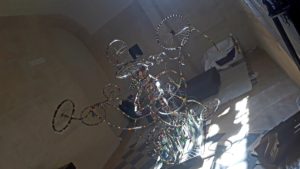
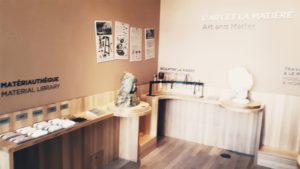
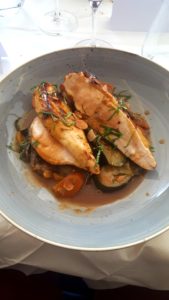
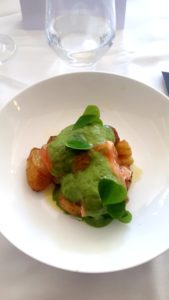
 Accessible from the Cour de Bar or the Square des Ducs, the Brasserie des Beaux-Arts welcomes you in their cosy contemporary restaurant room, to enjoy a local and fresh cuisine based on seasonal products, straight delivered from the market. The homemade dishes cover all kind of preferences, to be joined with organic or Burgundy wines, especially selected for their typicality, their history and their harmony with the Home cooking. For a business meal, lunch with friends, a romantic rendez-vous or a family gathering. Lunch menu 16,50 € or 21 €
Accessible from the Cour de Bar or the Square des Ducs, the Brasserie des Beaux-Arts welcomes you in their cosy contemporary restaurant room, to enjoy a local and fresh cuisine based on seasonal products, straight delivered from the market. The homemade dishes cover all kind of preferences, to be joined with organic or Burgundy wines, especially selected for their typicality, their history and their harmony with the Home cooking. For a business meal, lunch with friends, a romantic rendez-vous or a family gathering. Lunch menu 16,50 € or 21 €
Brasserie des Beaux-Arts – Square des Ducs de Bourgogne, 21000 Dijon – T: 00 33 (0)3 80 66 45 36 – Mail : contact@brasserie-beaux-arts.com – Open from Monday to Saturday : from 08h30 to 19h and Sunday from 9h to 19h.
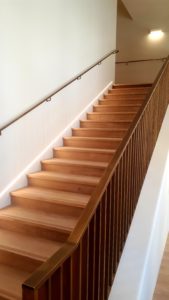
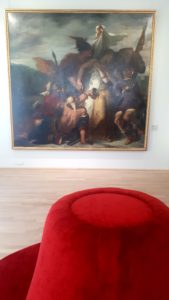
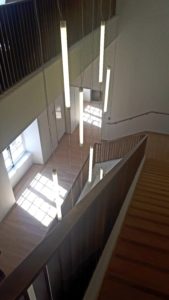 Along a modern structure, visible with modern wooden stairs and a lift device dedicated to disable people, there are also a selection of furniture, suitable to the freshness of the exhibition hall.
Along a modern structure, visible with modern wooden stairs and a lift device dedicated to disable people, there are also a selection of furniture, suitable to the freshness of the exhibition hall.
Moreover, a new multimedia interface was installed through the Art rooms, in order to fulfill a better information and signage. An offer completed a consortium of many companies, all expert in design and implementation of multimedia and audiovisual interactive mediation devices thanks to interactive kiosks at the disposal of museums’ visitors, such as Opixido, Anamnesia, Mazedia.
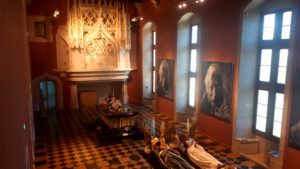
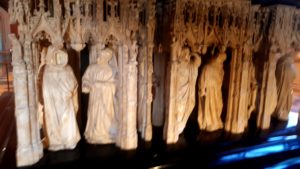
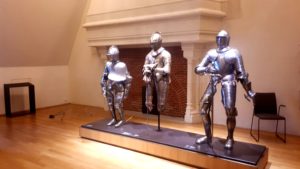
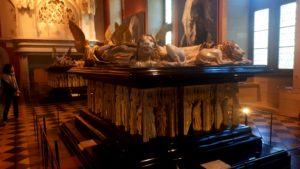
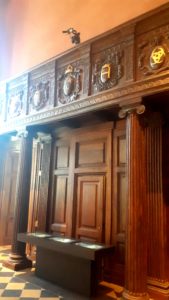

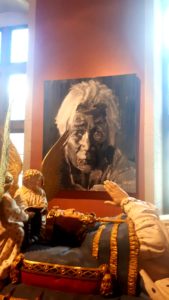 One of the centerpieces of this museum, the Salle des Gardes, this vast room (9 meters under ceiling, 18 meters long and 9 meters wide), includes an imposing fireplace of flamboyant Gothic style, which was the great reception hall of the palace, built by Philippe Le Bon in the middle of the 15th century. Unbelievable also, the presentation of the tombs of the dukes Jean-sans-Peur and Philippe-le-Hardi, representative monuments of the Burgundy sculpture of the fourteenth and fifteenth centuries. Although they’re not anymore exposed at the Chartreuse de Champmol, in the setting where they were designed, these two burials were restored in 1820 by the architect Claude Saintpère. Nowadays, the hall is decorated by a contemporary black and white painting of the chinese artist Yan Pei Ming, whose temporary exhibition accompanies the reopening of the Museum (more details at the end of the article).
One of the centerpieces of this museum, the Salle des Gardes, this vast room (9 meters under ceiling, 18 meters long and 9 meters wide), includes an imposing fireplace of flamboyant Gothic style, which was the great reception hall of the palace, built by Philippe Le Bon in the middle of the 15th century. Unbelievable also, the presentation of the tombs of the dukes Jean-sans-Peur and Philippe-le-Hardi, representative monuments of the Burgundy sculpture of the fourteenth and fifteenth centuries. Although they’re not anymore exposed at the Chartreuse de Champmol, in the setting where they were designed, these two burials were restored in 1820 by the architect Claude Saintpère. Nowadays, the hall is decorated by a contemporary black and white painting of the chinese artist Yan Pei Ming, whose temporary exhibition accompanies the reopening of the Museum (more details at the end of the article).
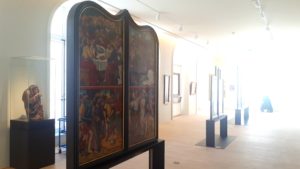
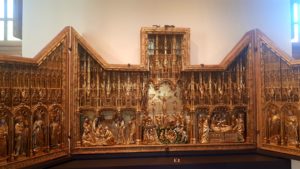
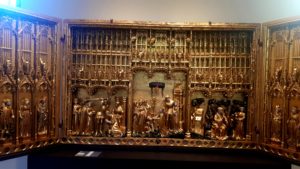

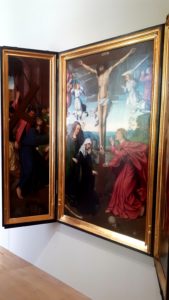
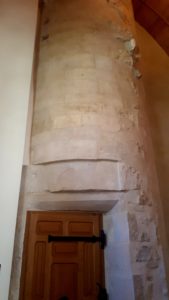 In this museum, which contains a substantial collection of medieval works, the idea was to show the confrontation of local artists, such as Jean Tassel and more famous ones. In a way to show that there are bridges between them.
In this museum, which contains a substantial collection of medieval works, the idea was to show the confrontation of local artists, such as Jean Tassel and more famous ones. In a way to show that there are bridges between them.
The Bellegarde Gallery dates from the 17th century and contains Italian collections including altarpieces.
The Museum collaborated with the Version Bronze cabinet of the company for the arrangement of the works.
This gallery has been attached in 1803 to the Dijon MBA Museum, in order to allow the presentation of large format paintings. For clearer hanging surfaces, the windows were clogged and skylights were created in the first half of the nineteenth century. Some photographs show us the scenography inside the gallery, at the early days of the twentieth century, with its dense hanging and its decoration, unfortunately removed in 1945. From that side, you would front the remaining wall of the Tower of Philippe-Le-Bon (Philip-The-Good), called the Terrace Tower in the Middle-Ages confirming the symbol of some ducal authority. This Tower dominates the palace by 46 meters.
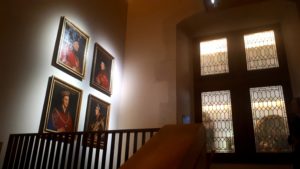

The Middle-Ages gothic part of the Museum of Fine-Arts still remains in many points of the monument. The visitor would be pleased to admire the renovation works which modernized the surfaces, nevertheless still endeavoring to preserve the spirit of the past, while highlighting their finest facets, like those very typical Burgundy window frames.
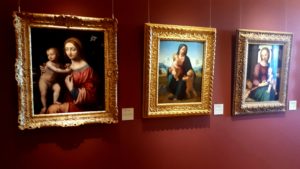
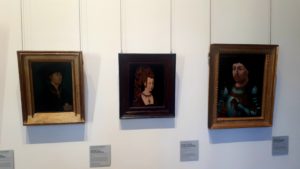

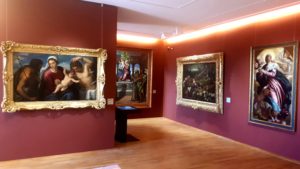
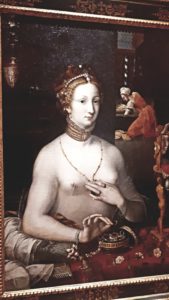

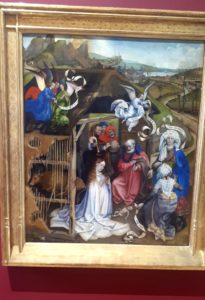 A large part of the collection is devoted to the Italian Renaissance Art movement, that was a real revolution in artistic though and practice. It started in the early 14th century in Northern Italy. Painters paid a real interest for realism sceneries, taking distance from traditional models (gold backgrounds, halos and stereotyped portraits), in order to focus on the reproduction of nature and human gestures. Even if religious topics were still predominant in the Renaissance artists’ philosophy, although those cohabited with mythology references. Indeed, Greco-Roman Antiquity was easily considered being an esthetic ideal to pursue through painting and plastic arts, such as sculpture and pottery.
A large part of the collection is devoted to the Italian Renaissance Art movement, that was a real revolution in artistic though and practice. It started in the early 14th century in Northern Italy. Painters paid a real interest for realism sceneries, taking distance from traditional models (gold backgrounds, halos and stereotyped portraits), in order to focus on the reproduction of nature and human gestures. Even if religious topics were still predominant in the Renaissance artists’ philosophy, although those cohabited with mythology references. Indeed, Greco-Roman Antiquity was easily considered being an esthetic ideal to pursue through painting and plastic arts, such as sculpture and pottery.


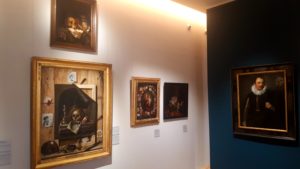
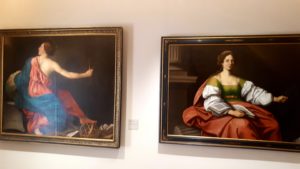
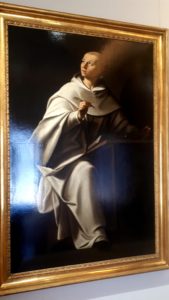
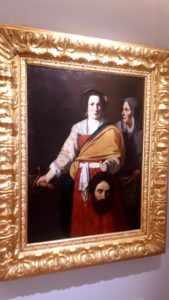
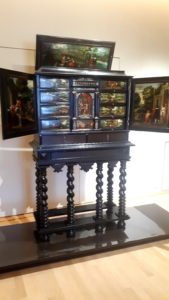 French Renaissance Art movement is also in the place… Although born in Italy, the Renaissance period introduced new models that quickly spread throughout Europe, like France in this case. Due to the presence of Italian artists at the court of King Francis I, Fontainebleau became the centre for the diffusion of these artistic and architectural innovations in France. This Bellifontain (people living or working in Fontainebleau) style visibly influenced the work of the artist Hugues Sambin, active in Dijon during the second half of the 16th century. Multi-talented cabinetmaker, architect, engraver, Sambin embodied the spirit of the Renaissance. His fertile imagination and rich, ornemental vocabulary echo the refinement of the arts of the table. At the end of the 16th century, Nicolas de Hoey from Flanders was viewed as the most prominent painter in Dijon.
French Renaissance Art movement is also in the place… Although born in Italy, the Renaissance period introduced new models that quickly spread throughout Europe, like France in this case. Due to the presence of Italian artists at the court of King Francis I, Fontainebleau became the centre for the diffusion of these artistic and architectural innovations in France. This Bellifontain (people living or working in Fontainebleau) style visibly influenced the work of the artist Hugues Sambin, active in Dijon during the second half of the 16th century. Multi-talented cabinetmaker, architect, engraver, Sambin embodied the spirit of the Renaissance. His fertile imagination and rich, ornemental vocabulary echo the refinement of the arts of the table. At the end of the 16th century, Nicolas de Hoey from Flanders was viewed as the most prominent painter in Dijon.
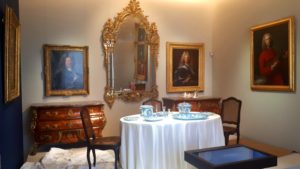
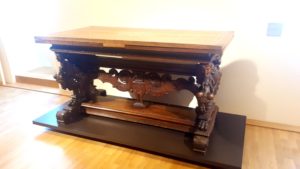
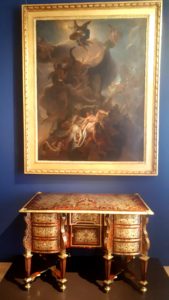
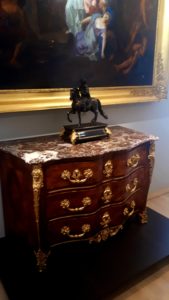
 On the first floor, we would be amazed by the preponderance of period furniture, like this dining room recomposition or like this 17th part pendulum.
On the first floor, we would be amazed by the preponderance of period furniture, like this dining room recomposition or like this 17th part pendulum.
Then is exposed the Mazarin bureau, totally renovated by a Burgundian craftsman, revealing an inner and outer dialogue that occurred.
Another masterpiece, arrived in the Museum’s collections in 1883, enriched by the legacy of Edma and Anthelme Trimolet, a historic piece of furniture. It was a Louis XV lacquered wood bureau, BVRB stamped, meaning that this piece of furniture had been made between 1737 and 1745 in the workshops of Bernard II Van Tisen Burgh, a famous Flemish cabinetmaker.
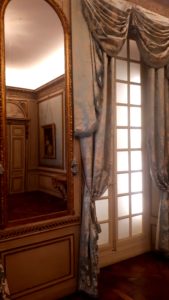
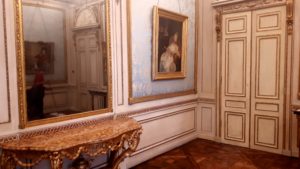 Not far from this, you would admire the Gaulin Salons’ precious woodwork, offering a testimony outstanding production of Jérôme Marlet dedicated to the Dijon hotels, properties of the aristocracy and parliamentarians.
Not far from this, you would admire the Gaulin Salons’ precious woodwork, offering a testimony outstanding production of Jérôme Marlet dedicated to the Dijon hotels, properties of the aristocracy and parliamentarians.
This decor reflects all the talents of those Burgundian decorations from the end of the 18th century, some competed with many Parisian achievements.
Since it was in pretty good condition, those Gaulin Salons interested a lot some American museums which prospected for new acquisitions through French provinces. Indeed, it was a period influenced by a full trend about Period Rooms and more globally decorative arts of the eighteenth century. Then this Salon was bought in 1922 by the banker J. Pierpont Morgan who then offered it to the Metropolitan Museum of New York, becoming the first Period Room of this museum. In 1953, this Period Room was removed from the showrooms in favor of the salon of the Parisian Tessé Hotel. The woodworks of Jérôme Marlet were then temporarily loaned to the Los Angeles County Museum before being sold in 1971 to Mr. H. De Young Memorial Museum of San Francisco, who put it back to the market in 1997. After this trip in the USA, the Salons Gaulin were dismembered and only the woodwork part returned to Dijon, thanks to the acquisition of the Musée des Beaux-Arts in 1999. Those woodworks were assembled with Versailles parquet and a chimney in original marble. In the absence of 18th century silks, the panels were covered by a blue-green and silver lampas, woven from a model of the 1785s.
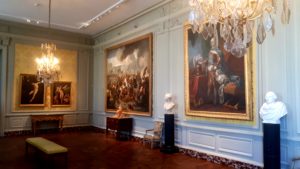 Another Salon of the Museum is unmissable, the Salon de Condé which has been arranged and decorated in tribute of this family of Burgundy, also called Battles Gallery.
Another Salon of the Museum is unmissable, the Salon de Condé which has been arranged and decorated in tribute of this family of Burgundy, also called Battles Gallery.
There are also exposed many works realized by students of the Drawing School including Pierre-Joseph Proudhon, according to the typical Dijon furniture. Some works are exclusive including this deposit of the Museum of Fine Arts of Lyon. The works and the decorations of this Salon de Condé were both intended to serve as examples to the guests and also the Drawing School’s students, to remind them the glory of the Princes of the House of Condé, benefactors of the Province. Throughout the eighteenth century, the woodwork remains the usual siding of many rooms, they offered the advantage of concealing the partitions materials and dampening noises.
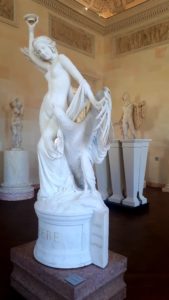
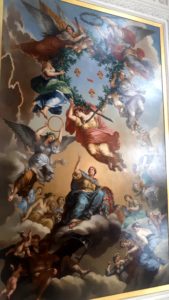
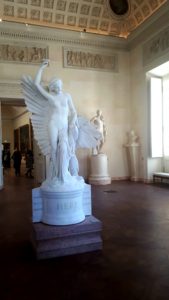 The works of the prize-winning students of the Prix de Rome were to be used to decorate the Palais des États. But in 1786, Louis-Joseph de Bourbon, Prince de Condé, decided that the most beautiful copies after the antique would be arranged in a large adjoining room called Salle des Statues (Hall of the Statues). This hall would be decorated by the architect Jean-Charles Bellu.
The works of the prize-winning students of the Prix de Rome were to be used to decorate the Palais des États. But in 1786, Louis-Joseph de Bourbon, Prince de Condé, decided that the most beautiful copies after the antique would be arranged in a large adjoining room called Salle des Statues (Hall of the Statues). This hall would be decorated by the architect Jean-Charles Bellu.
The States of Burgundy also chose a famous artist, named after Pierre-Paul Prud’hon, to create the immense canvas that would adorn the ceiling of the Salle des Statues of this first museum in Dijon. A pupil of the drawing school of Dijon and awarded of the Dijon Prix de Rome of 1784, Prud’hon had then undertaken his four-year stay in the Italian capital. This decorative order was erected to the glory of Burgundy and it conciliated the vocation of the Museum to present the works of the laureates of the Prix de Rome, created by the Burgundian States in 1776, and the requirements of a solemn celebration of the governors of the Province, namely the Princes of Condé.
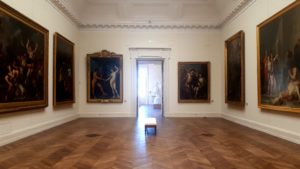 Dominated by the French School, the collections of the Nineteenth Century period are more than ever showcased, in 2019 within the renovated museum.
Dominated by the French School, the collections of the Nineteenth Century period are more than ever showcased, in 2019 within the renovated museum.
They form a homogeneous group that gives pride to Burgundy artists. From Romanticism to Symbolism, through Realism, Academism and Impressionism, this collection reflects the changes of an abundant and innovative Century.
Those artistic nuances are showcased in spacious halls, due to the large sizes of many of those creations, filling a main part of those walls.
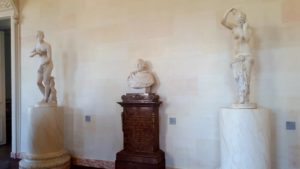
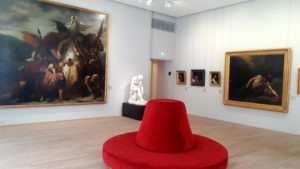
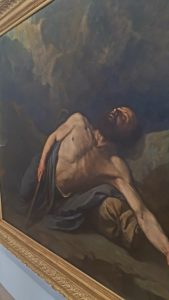
 The following Romanticism part, detaches from ancient subject matters, exploring new thematics. Following the Gustave Moreau‘s huge artwork, Cantique des Cantiques (Song of Songs), many other paintings represent biblical characters.
The following Romanticism part, detaches from ancient subject matters, exploring new thematics. Following the Gustave Moreau‘s huge artwork, Cantique des Cantiques (Song of Songs), many other paintings represent biblical characters.
Those ones being tempted by vice, fully inspired by contemprary literature.
For example, Louis Boulanger illustrated Shakespeare and Victor Hugo in a rich collection of small and large format canvases, while fellows depicted the foolhardy Don Quichotte (like this statue below), a certain reflect of desperate hopes.
This motivation meant to explore the soul of humans by revealing deep feelings, even violent passions, illustrated by strong contrasts.
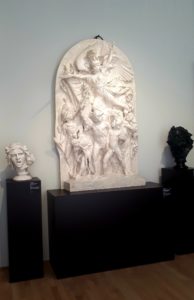
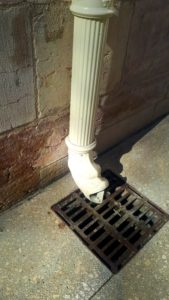 You would also have the chance to enjoy romantic paintings and studies by Théodore Géricault, Célestin Nanteuil, Victor Hugo and Sophie Rude, complemented by the sculptures of François Rude (the sculptor of the Triumph Arch facade), Jean-Baptiste Carpeaux and Emmanuel Fremiet, as well as a series of animal bronzes by Louis-Antoine Barye. You have to notice that François Rude has its own Rude Museum, also located in Dijon, inside the Saint-Étienne Church. The edifice discloses the mouldings and the monumental works of the Dijon sculptor.
You would also have the chance to enjoy romantic paintings and studies by Théodore Géricault, Célestin Nanteuil, Victor Hugo and Sophie Rude, complemented by the sculptures of François Rude (the sculptor of the Triumph Arch facade), Jean-Baptiste Carpeaux and Emmanuel Fremiet, as well as a series of animal bronzes by Louis-Antoine Barye. You have to notice that François Rude has its own Rude Museum, also located in Dijon, inside the Saint-Étienne Church. The edifice discloses the mouldings and the monumental works of the Dijon sculptor.
Also inspired by the French conquest of Algeria in 1830, the Orientalism Art movement reveals to a particular young romantic generation, fascinated by the magic of color and light.
Those beautiful exotic landscapes could be admired, for example, in the Moroccan sketches of Eugène Delacroix.
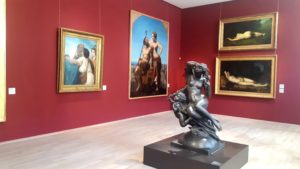
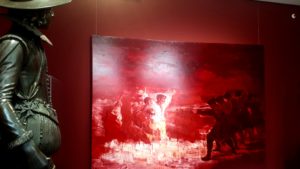

 Academism Art trend portrays portraits of high society in phoney sets, magnifying a certain aesthetic of the anatomy and clothing style of individuals. An Art, often criticized as pompous, in search of a certain perfection or an ideal, possible by advanced techniques in painting. This style went hand in hand with the majestic and booming era of the Parisian Private Hotels, with large spaces to decorate, under the Empire of Napoleon III.
Academism Art trend portrays portraits of high society in phoney sets, magnifying a certain aesthetic of the anatomy and clothing style of individuals. An Art, often criticized as pompous, in search of a certain perfection or an ideal, possible by advanced techniques in painting. This style went hand in hand with the majestic and booming era of the Parisian Private Hotels, with large spaces to decorate, under the Empire of Napoleon III.
This Academism is usually derided as a pompous 19th century Art, favoured by the upper classes whose grandiose portraits in a mannered setting were meant to show off their exploits or status. Such as the Maréchal Vaillant, who displays his medals while posing comfortably upright in the location of a battlefield. This art movement globally treats historical and biblical themes, showing clean shapes and nude anatomy of male and female models, illustrating a quest for ideal beauty. This explicits the technical mastery of those artists, like Carpeaux.
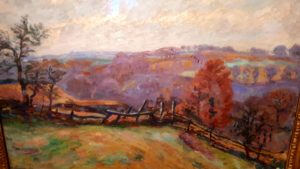 From the realistic genre scene to the impressionist landscapes…
From the realistic genre scene to the impressionist landscapes…
The 1848 Revolution encouraged the emergence of a social and realistic Art, embodied by Gustave Courbet and his Burgundian emulators, Alphonse Legros (Ex-voto) and Felix Trutat.
In the genre of landscape, this naturalist current is acclaimed by a group of painters who gather, as early as the 1830s, in Barbizon, to work on the motif.
 Théodore Daubigny, Théodore Rousseau and Jean-François Millet are represented in the Dijon collections by a set of sketches and study sheets.
Théodore Daubigny, Théodore Rousseau and Jean-François Millet are represented in the Dijon collections by a set of sketches and study sheets.
Impressionism and Neo-Impressionism were represented by many masterpieces realized by international famous painters, like Edouard Manet, Louis-Eugene Boudin, Claude Monet, Alfred Sisley, Camille Pissarro and Henri-Edmond Cross. The landscapes scenes were various, from the Seine valley, Normandy until the Creuse valley, all of those faraway lands are present in the corridors.
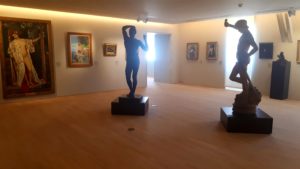
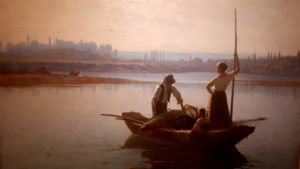
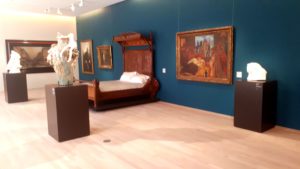
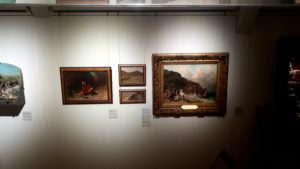
The latter goes to the antithesis of realism, also initiated in the 1850s, representing the forgotten of this economic boom. also his place. This movement thus depicts scenes from everyday life marked by the societal issues of the time, such as the rural exodus and the first disenchantments in the face of the Industrial Revolution, which upset the traditions.
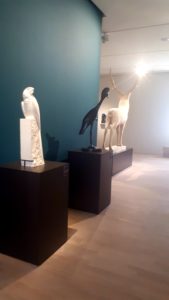
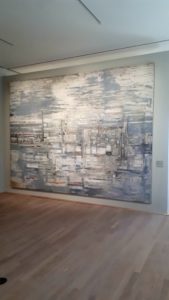 Another art room makes the junction between the 19th and the 20th centuries, starting with the creative world of local artist François Pompon, whose famous Polar Bear sculpture is duplicated by the Musée d’Orsay at the Darcy Square of Dijon (check our previous article here). This masterpiece of the artist initiates other works, mostly monumental animals.
Another art room makes the junction between the 19th and the 20th centuries, starting with the creative world of local artist François Pompon, whose famous Polar Bear sculpture is duplicated by the Musée d’Orsay at the Darcy Square of Dijon (check our previous article here). This masterpiece of the artist initiates other works, mostly monumental animals.
From the majestic deer to the good-natured pelican, without forgetting the little piglets suckling mother’s sow’s milk nor the barnyard hen’s, the essence of François Pompon lies in the animal world. Slowly passionately, he sculpted all sorts of animals, modeling their silhouettes into stylized polished shapes. Soft light is cast on the full nearly perfection. Pompon’s large works were made after 1922, this year was unveiled his Polar Bear at the Salon d’Automne in Paris. This is exposed nearby the giant Urbi et orbi painted by the portuguese painter Maria-Helena Vieira da Silva.

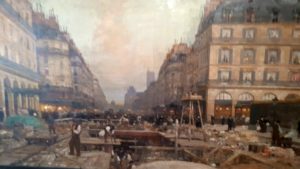
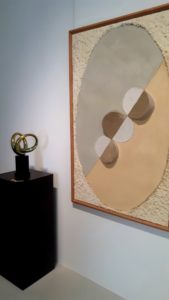
 This room is adjacent to a space dedicated to the Granville Donation, occupying an important place in the selection of nineteenth century but also of the contemporary art, like this Robert Delaunay, Relief – Rythme 1930 cubist collage.
This room is adjacent to a space dedicated to the Granville Donation, occupying an important place in the selection of nineteenth century but also of the contemporary art, like this Robert Delaunay, Relief – Rythme 1930 cubist collage.
This collection of a life, fruit of their frequent attendance of the auctions, opens the eyes on artistic currents as vast as the romanticism, symbolism, school of Barbizon, as well as an opening on Cubism and the Second School of Paris. The spouses did not put a hierarchy between the artists.
Pierre and Kathleen Granville frequented auctions and ateliers of their artist friends. They collected nearly one thousand artworks, which were bequeathed to the Musée des Beaux-Arts de Dijon, through three separate donations: 1969, 1974 and 1986.
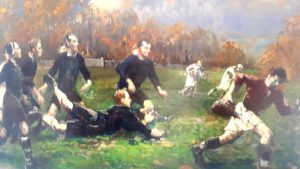

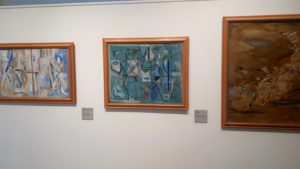
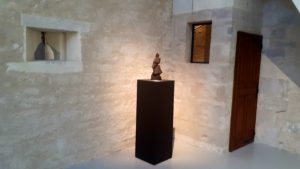
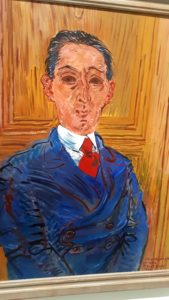
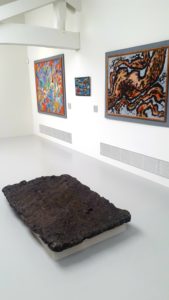 The final, posthumous bequest of 2006 constitutes the epilogue of the project of these exceptional art world adventurers.
The final, posthumous bequest of 2006 constitutes the epilogue of the project of these exceptional art world adventurers.
The Granvilles’ contribution greatly enriched the museum’s 19th century collections (Romanticism, School of Barbizon, Symbolism) and opened the door to the 20th century (Cubism, second School of Paris). It comprises many Nicolas de Staël paintings (see the pictures upon and nearby).
Reflecting the personal tastes of the donors, the variety of art pieces offers interesting thematic and plastic connections between ancient, modern and primitive arts.
This Granvilles’ section is spread until the new top floor with a view on the bell towers of the Cathedral and the roofs of the Dijon half-timbered houses.
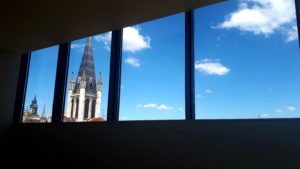
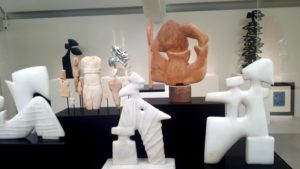
Another beautiful panorama to enjoy about their interest in the Second School of Paris. This passion for this art current, after 1945 is largely due to their friendship with major artists of this period. These painters and sculptors of different nationalities and inspirations often straddled the boundaries of figuration and abstraction. Estève claims a link with nature and landscape although his vibrant, luminous palette tends toward non-figuration. Fauna, flora, and the feminine figure are dominant themes of the sculptures of Hadju that convey fluid movement and sensuality. Wrapped in stone or indented in metal, their primordial simplicity recalls the pre-Hellenic Greek statuettes here exhibited here.
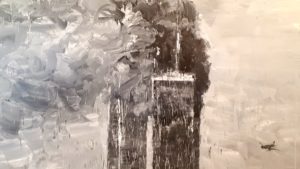
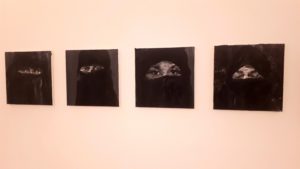
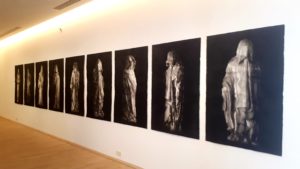
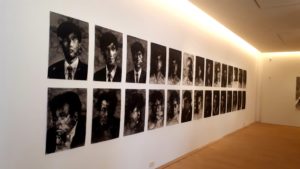
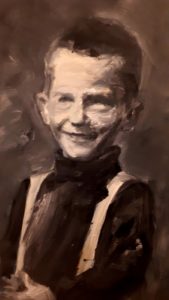
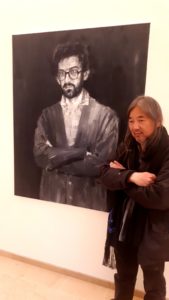
 For the launch of this new formula, Yan Pei Ming, a Dijon artist of Chinese origin and internationally renowned, opens the ball with his works in 50 shades of gray.
For the launch of this new formula, Yan Pei Ming, a Dijon artist of Chinese origin and internationally renowned, opens the ball with his works in 50 shades of gray.
Between small and very large formats, the artist appropriates various social themes such as the attacks of September 11, the explosion of Fukushima, a series of veiled women (see photos upon and nearby).
Other more representative paintings, including bestiaries, or family portraits complement this exhibition.
This confrontation of dark colors blends perfectly with the new contemporary facet of the Museum and is even associated in some rooms with more classical works. This shift has a noticeable effect.
This contemporary facet of this new museum may be able to forge links with the other contemporary center of Dijon, the Consortium.
Musée des Beaux-Arts de Dijon – 1 Rue Rameau, 21000 Dijon – Open every day (unless Tuesdays) from 9h30 to 18h.


